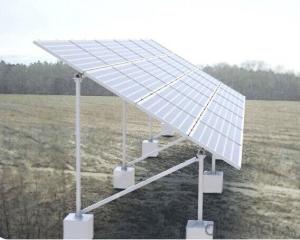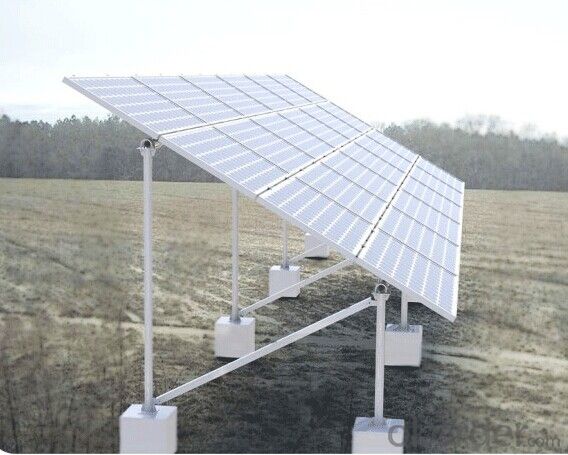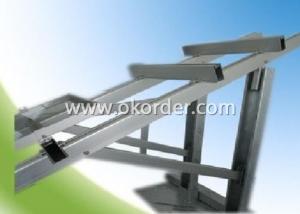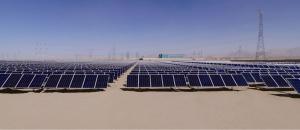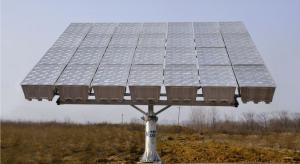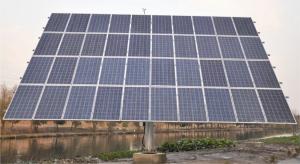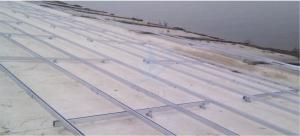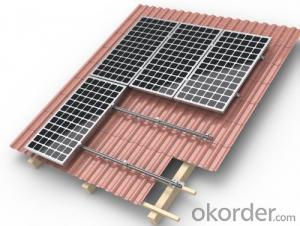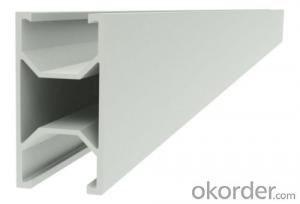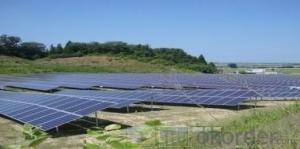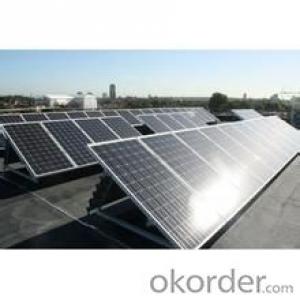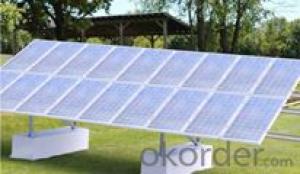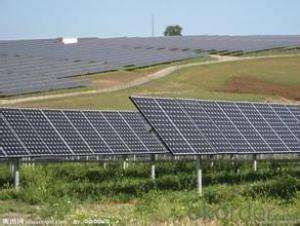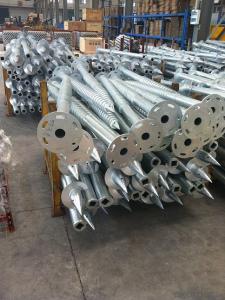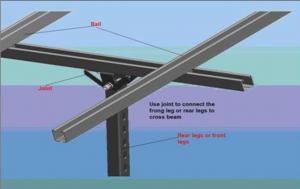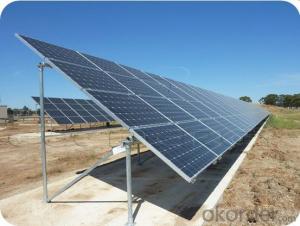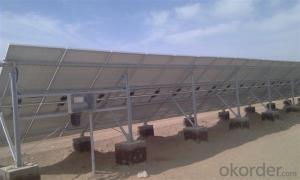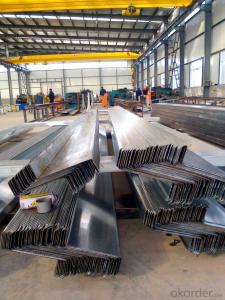UB-Ground Mounting System for Solar Mounting System China
- Loading Port:
- China Main Port
- Payment Terms:
- TT OR LC
- Min Order Qty:
- -
- Supply Capability:
- -
OKorder Service Pledge
OKorder Financial Service
You Might Also Like
UB-Ground Mounting System is applicable to be the photovoltaic array system on the open field.This system is designed to be steady and safety complied with the structural mechanics and construction acts.
For the difference foundation solutions, such as concrete with pre-buried bolt, direct buried and ground screw, the system can be modified to be installed.Its material, include the hot galvanized steel and anodized aluminum alloy, is all have high anti-corrosive for using outdoor.
According to the practical requirement, The system could be planned and customized on the factory to eliminate thewelding and cut onsite to save your time and money.
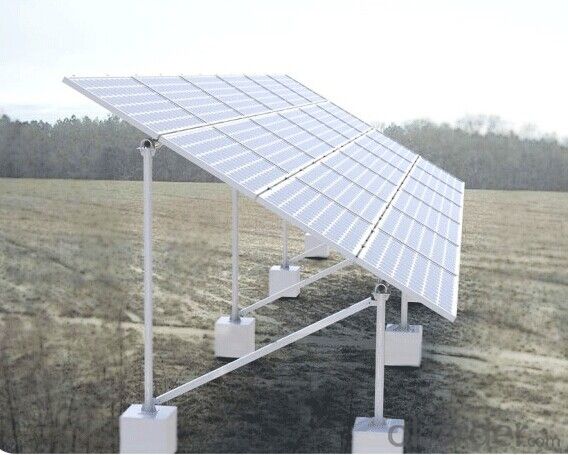
Technical Information:
Install site:Open ground
Tilt Angle:10~60deg
System Height:<2.5m
Max Wind Speed:<60m/s
Snow Load:<1.4KN/㎡
Standard:AS/NZS 1170 and other international Standard
Material:Aluminum alloy Al6005-T5& Stainless steel 304 & Hot galvanized steel
Anticorrosive:Anodized & Hot galvanized
Color:Natural or Optional
Warranty:Ten years warranty and up twenty years service life
- Q: Can a solar mounting system be used with solar curtain walls?
- Yes, a solar mounting system can be used with solar curtain walls. The solar mounting system provides the necessary support and structure for the solar panels, while the solar curtain walls allow for the integration of solar energy generation into the building's exterior façade. This combination enables the building to utilize both vertical and horizontal surfaces for solar energy production.
- Q: Can a solar mounting system be used on concrete roofs?
- Yes, a solar mounting system can be used on concrete roofs. Concrete roofs provide a stable and durable surface for installing solar panels, and there are various types of mounting systems available that can be specifically designed or adapted for concrete roofs. These systems ensure secure installation and proper weight distribution to support the solar panels on concrete roofs.
- Q: Can a solar mounting system be used in urban areas?
- Yes, a solar mounting system can be used in urban areas. In fact, solar mounting systems are commonly used in urban areas to maximize limited space and generate clean energy.
- Q: What is the expected payback period for a solar mounting system?
- The expected payback period for a solar mounting system can vary depending on factors such as the initial cost of the system, the amount of energy it generates, the local electricity rates, and any available incentives or tax credits. However, on average, it typically ranges from 5 to 10 years.
- Q: Are there any government incentives or rebates available for installing a solar mounting system?
- Yes, there are government incentives and rebates available for installing a solar mounting system. These incentives vary by country and region, but they often include tax credits, grants, and rebates. It is advisable to research and consult local government agencies or solar industry associations to determine the specific incentives and rebates available in your area.
- Q: Can solar mounting systems be installed on flat ground?
- Yes, solar mounting systems can be installed on flat ground. In fact, flat ground is one of the most common locations for solar panel installations. It is relatively easy to install solar mounting systems on leveled surfaces without any slope, making it cost-effective and efficient for residential, commercial, and utility-scale solar projects.
- Q: Can a solar mounting system be installed on a pergola or patio cover?
- Yes, a solar mounting system can be installed on a pergola or patio cover. These structures provide a suitable surface for mounting solar panels, allowing for the generation of clean and renewable energy while maximizing space utilization. However, it is important to ensure that the pergola or patio cover is structurally capable of supporting the weight of the solar panels and that proper installation and wiring are carried out to ensure efficiency and safety.
- Q: How does a solar mounting system affect the roof's integrity?
- A solar mounting system, if properly installed, should not significantly affect the roof's integrity. It is designed to distribute the weight of the solar panels evenly across the roof's surface, minimizing any potential damage or stress. Additionally, modern mounting systems utilize non-penetrating methods or secure attachments to prevent leaks or structural issues. However, it is crucial to consult a professional installer to ensure the system is correctly installed and does not compromise the roof's integrity.
- Q: Can a solar mounting system be used on RVs?
- Yes, a solar mounting system can be used on RVs. They are specifically designed to be lightweight and durable, making them perfect for installation on the roofs or exteriors of recreational vehicles. This allows RV owners to harness solar energy for powering appliances, charging batteries, and reducing reliance on traditional power sources while on the road.
- Q: Can a solar mounting system be used in areas with limited access to sunlight?
- No, a solar mounting system cannot effectively be used in areas with limited access to sunlight as it relies on sunlight to generate electricity.
Send your message to us
UB-Ground Mounting System for Solar Mounting System China
- Loading Port:
- China Main Port
- Payment Terms:
- TT OR LC
- Min Order Qty:
- -
- Supply Capability:
- -
OKorder Service Pledge
OKorder Financial Service
Similar products
Hot products
Hot Searches
Related keywords
